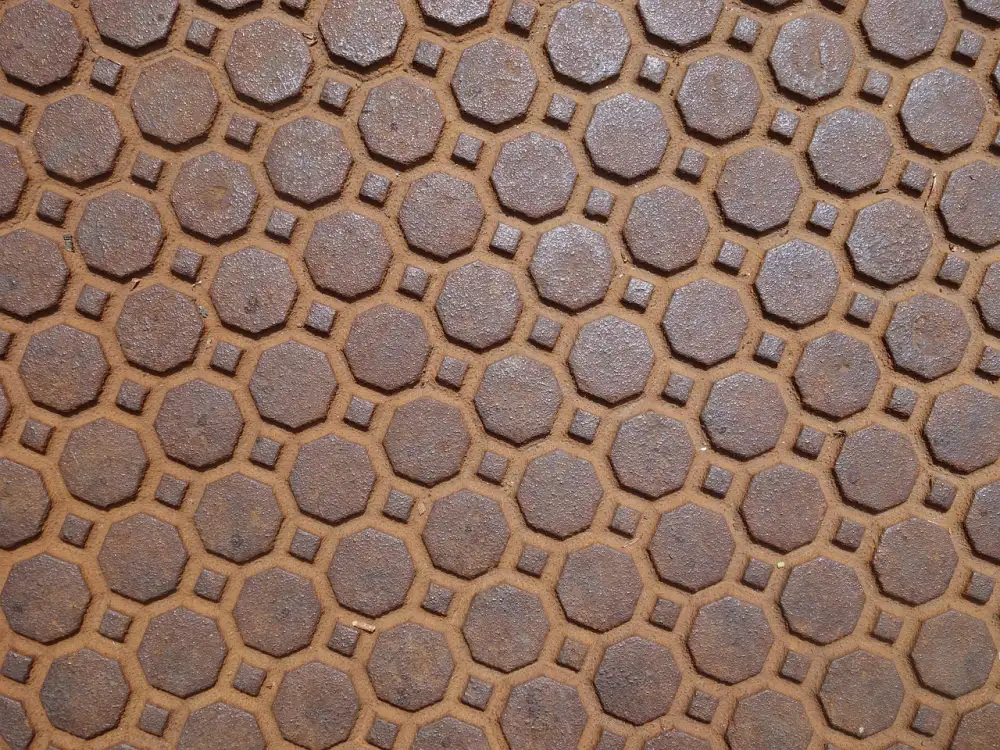Master the Art of Cleaning a Cast Iron Skillet: A Step-by-Step Guide to Home Maintenance

Cleaning a cast iron skillet may seem like a daunting task, but with the right techniques and tools, it can be easily mastered. Cast iron skillets are prized for their ability to distribute heat evenly and create a beautiful sear on food. However, they require special care to maintain their seasoning and prevent rusting. In this step-by-step guide, we will walk you through the process of cleaning and maintaining your cast iron skillet, ensuring that it remains in top-notch condition for years to come. So let's dive in and discover the art of cleaning a cast iron skillet!
Gather the necessary supplies for cleaning
To effectively clean a cast iron skillet, it is important to gather the necessary supplies beforehand. Here are the essential items you will need:
1. Hot water: Make sure to have access to hot water as it helps in loosening any stuck-on food particles.
2. Soft brush or sponge: Use a soft-bristled brush or sponge specifically designated for cleaning cast iron. Avoid using abrasive scrubbers that can damage the skillet's seasoning.
3. Mild dish soap: Contrary to popular belief, it is safe to use a small amount of mild dish soap to help remove stubborn residue. Just make sure to rinse thoroughly afterward.
4. Salt or baking soda: These natural abrasives can be used as an alternative to dish soap if preferred. They help in gently scrubbing away any remaining food debris.
5. Paper towels or clean cloth: Have some paper towels or a clean cloth ready for drying the skillet after cleaning.
By having these supplies on hand, you will be well-prepared to tackle the task of cleaning your cast iron skillet effectively and safely.
Preparing the skillet for cleaning
Preparing the skillet for cleaning is an important step to ensure effective and safe maintenance. Start by allowing the skillet to cool down completely after use. Never attempt to clean a hot skillet as it can cause burns. Once cooled, remove any excess food particles or residue using a stiff brush or scraper. Avoid using soap at this stage as it can strip away the skillet's seasoning. Instead, focus on gently scrubbing the surface to loosen any stuck-on bits. If necessary, you can add a small amount of kosher salt as an abrasive agent while scrubbing.
Cleaning the cast iron skillet
Cleaning the cast iron skillet is an important step to maintain its longevity and cooking performance. Start by rinsing the skillet with hot water, avoiding soap as it can strip away the seasoning. Use a stiff brush or sponge to scrub away any food residue or stuck-on bits. For stubborn stains, sprinkle coarse salt onto the skillet and scrub gently. Rinse thoroughly and inspect for any remaining debris. If necessary, repeat the process until the skillet is clean. Remember to dry it completely to prevent rusting.
Drying and re-seasoning the skillet
Drying and re-seasoning the skillet is an important step in maintaining its longevity and non-stick surface. After cleaning, make sure to thoroughly dry the skillet to prevent rusting. Use a clean towel or paper towels to remove any moisture.
Once dry, it's time to re-season the skillet. This process involves applying a thin layer of oil to the surface of the skillet to create a protective barrier. Start by heating the skillet on low heat for a few minutes to open up its pores.
Next, apply a small amount of oil, such as vegetable or flaxseed oil, onto a paper towel or cloth. Rub the oil all over the inside and outside of the skillet, making sure to cover every inch. Be careful not to use too much oil as it can become sticky.
After applying the oil, heat the skillet on medium-low heat for about 10 minutes. This will help the oil penetrate into the iron and create that coveted non-stick surface. Allow the skillet to cool completely before storing it.
Remember that seasoning is an ongoing process, so don't be afraid to repeat this step periodically or whenever you notice your skillet losing its non-stick properties.
By properly drying and re-seasoning your cast iron skillet, you'll ensure its longevity and enjoy cooking with it for years to come.
Storing the cast iron skillet properly
Storing the cast iron skillet properly is crucial to maintaining its longevity and preventing rust. After cleaning and drying the skillet, make sure it is completely cool before storing it. Avoid stacking other cookware on top of it, as this can cause scratches or damage to the seasoning. To prevent moisture buildup, place a paper towel or clean cloth inside the skillet before storing. Store the skillet in a dry place with low humidity, such as a cupboard or pantry. If you prefer to hang your skillets, use a sturdy hook or rack that can support its weight. By following these storage tips, you can ensure your cast iron skillet stays in pristine condition for years to come.
Cleaning and maintaining a cast iron skillet may seem like a daunting task, but with the right tools and techniques, it can be a breeze. By following the steps outlined in this guide, you can ensure that your skillet stays in pristine condition for years to come.
Here are some final tips to help you maintain a clean cast iron skillet:
1. Avoid using soap: Soap can strip away the seasoning on your skillet, so it's best to avoid using it. Instead, focus on using hot water and a stiff brush to remove any food particles.
2. Dry thoroughly: After cleaning your skillet, make sure to dry it thoroughly to prevent any moisture from causing rust. You can do this by placing it on the stovetop over low heat or by wiping it down with a clean cloth.
3. Re-season regularly: To keep your skillet well-seasoned and non-stick, re-season it regularly. This involves applying a thin layer of oil and heating it until it reaches its smoking point. This will help maintain the protective coating on your skillet.
4. Store properly: When storing your cast iron skillet, make sure it is completely dry to prevent rusting. You can place a paper towel or cloth inside the skillet to absorb any excess moisture.
By following these tips and incorporating regular cleaning into your routine, you can enjoy the benefits of cooking with a well-maintained cast iron skillet for many meals to come!
Published: 29. 12. 2023
Category: Food



